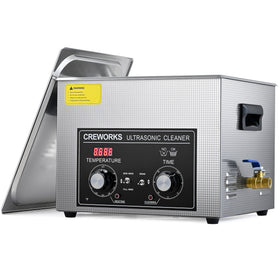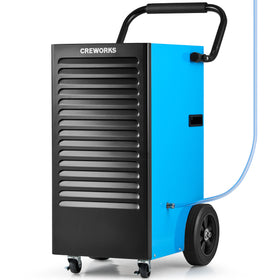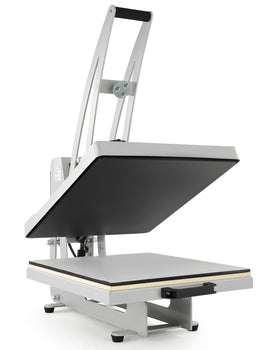With over 10000+ orders
With over 10000+ orders
If you've ever spent hours scrubbing dirty auto parts, you know how tiring it can be. Cleaning dirty car parts is a job most mechanics don't enjoy, but ultrasonic cleaners can save you a lot of time and effort. Here's what I've learned from watching real tests of these helpful tools.

Credits to @Mikes Garage
Many people focus on how big an ultrasonic cleaner is when shopping. But the heating element actually makes the biggest difference in how well it cleans.
During testing in a cold 42°F garage, a cleaner with a strong 600-watt heater reached the ideal cleaning temperature of 177°F in about an hour. This is impressive considering how cold it was to start. Once the solution got hot enough, even stubborn grease broke down much faster.
Heat helps activate the cleaning process. The ultrasonic waves create tiny bubbles that clean, but the heat helps those bubbles work better on tough grime.
You might be surprised to learn that regular white vinegar from the grocery store (about $2-3) works really well in ultrasonic cleaners. During testing, white vinegar with proper heat cleaned automotive grease effectively.
This is great news if you clean parts often. Using vinegar instead of specialty cleaners that cost $20 or more per gallon can save you a lot of money over time.
However, for parts with rust or heavy tarnish, you might need something stronger. Specialized ultrasonic cleaning solutions can make a big difference.

Rust dissolving solutions made for metals are worth the extra cost when dealing with valuable or badly rusted parts. These cleaners:
For example, professional-grade rust removers are gentle on metals but tough on corrosion. They're specially made to work with the ultrasonic waves to lift rust from hard-to-reach places.
If you work on older cars or restore vintage parts, having both regular vinegar and a specialized rust solution gives you options for different cleaning needs.
The best way to judge an ultrasonic cleaner is to see how it handles truly dirty parts. In one test, a cleaner was filled with bolts covered in old grease, tools with hardened oil, and parts with layers of shop grime.
After 60 minutes at full temperature, the results were impressive. Dirt that would have taken hours to scrub by hand became so loose it wiped away easily. Even hard-to-reach spots like bolt threads came clean without any scrubbing.

The cleaning solution turned completely black – showing just how much dirt was removed.
While ultrasonic cleaners work great for many jobs, it helps to know what they can and can't do.
One auto rebuilder who works with starters and alternators shared that while the cleaner removed oil and grease well, it didn't fully clean oxidized aluminum parts with baked-on road grime.
Some parts still needed media blasting to look brand new. Knowing this might help you have realistic expectations about what your cleaner can do.
For most jobs though – especially cleaning carburetors, complex parts, and areas that are hard to reach by hand – ultrasonic cleaning works extremely well.

After seeing how different ultrasonic cleaners perform, I highly recommend the Creworks 22L Digital Ultrasonic Cleaner as it offers several helpful features for automotive use:
If you're looking to make auto parts cleaning easier and more effective, this ultrasonic cleaner offers great performance without requiring a huge investment.
No matter which ultrasonic cleaner you choose, these tips will help you get better results:
Ultrasonic cleaners work especially well for these automotive parts:
If you work on cars regularly, an ultrasonic cleaner will save you a lot of time. The hours you won't spend scrubbing parts by hand quickly make up for the cost.
Most importantly, ultrasonic cleaning gets parts cleaner than hand scrubbing ever could. This means better running engines, smoother operating parts, and less time wasted on cleaning.
Whether you're a weekend mechanic or run a small shop, adding an ultrasonic cleaner to your tools makes dirty jobs much easier.











